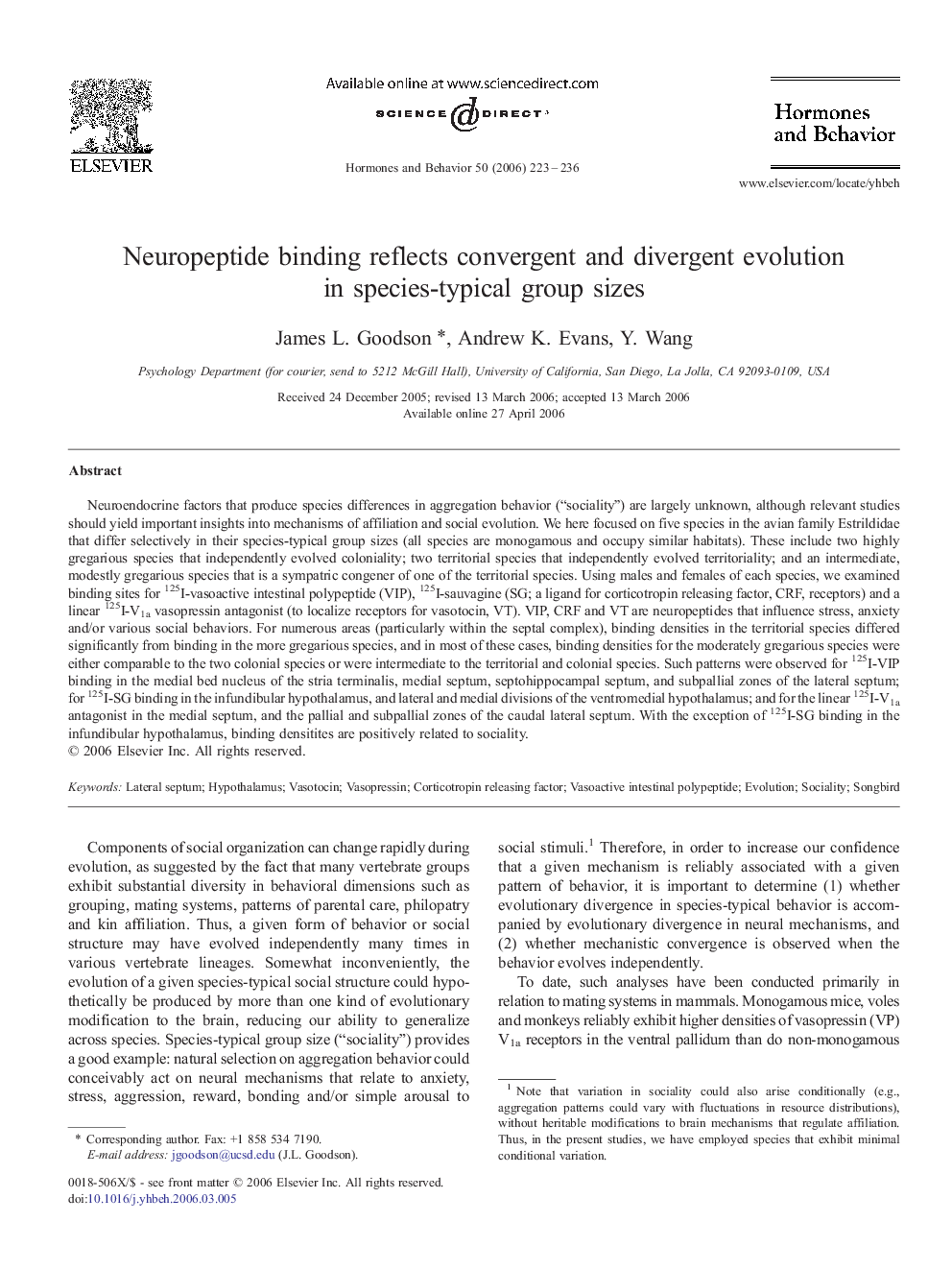| کد مقاله | کد نشریه | سال انتشار | مقاله انگلیسی | نسخه تمام متن |
|---|---|---|---|---|
| 323919 | 540821 | 2006 | 14 صفحه PDF | دانلود رایگان |

Neuroendocrine factors that produce species differences in aggregation behavior (“sociality”) are largely unknown, although relevant studies should yield important insights into mechanisms of affiliation and social evolution. We here focused on five species in the avian family Estrildidae that differ selectively in their species-typical group sizes (all species are monogamous and occupy similar habitats). These include two highly gregarious species that independently evolved coloniality; two territorial species that independently evolved territoriality; and an intermediate, modestly gregarious species that is a sympatric congener of one of the territorial species. Using males and females of each species, we examined binding sites for 125I-vasoactive intestinal polypeptide (VIP), 125I-sauvagine (SG; a ligand for corticotropin releasing factor, CRF, receptors) and a linear 125I-V1a vasopressin antagonist (to localize receptors for vasotocin, VT). VIP, CRF and VT are neuropeptides that influence stress, anxiety and/or various social behaviors. For numerous areas (particularly within the septal complex), binding densities in the territorial species differed significantly from binding in the more gregarious species, and in most of these cases, binding densities for the moderately gregarious species were either comparable to the two colonial species or were intermediate to the territorial and colonial species. Such patterns were observed for 125I-VIP binding in the medial bed nucleus of the stria terminalis, medial septum, septohippocampal septum, and subpallial zones of the lateral septum; for 125I-SG binding in the infundibular hypothalamus, and lateral and medial divisions of the ventromedial hypothalamus; and for the linear 125I-V1a antagonist in the medial septum, and the pallial and subpallial zones of the caudal lateral septum. With the exception of 125I-SG binding in the infundibular hypothalamus, binding densitites are positively related to sociality.
Journal: Hormones and Behavior - Volume 50, Issue 2, August 2006, Pages 223–236